All living things have a life expectancy. When you plant an annual you know it’s not coming back next year. When you plant a perennial you know it will keep coming back year after year. But how many years can you really expect your Azaleas to bloom? Will your Yew outlive you?
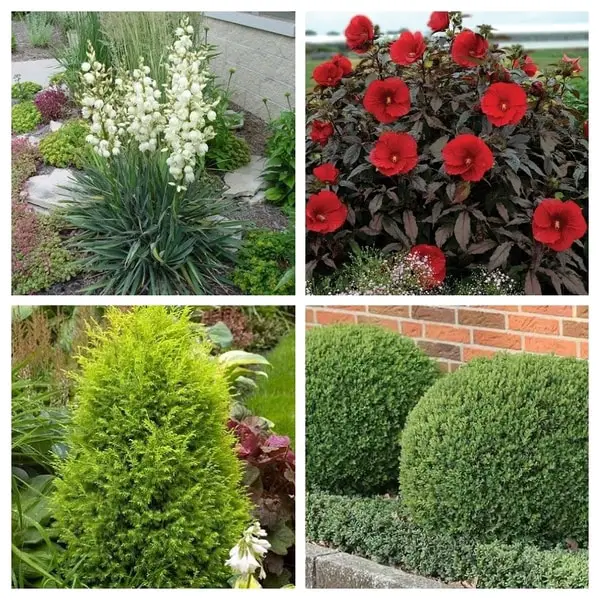
My mother planted Azaleas in the early ’70 and they produced beautiful pink and red flowers every spring. Now, however, each year they have fewer and fewer flowers, and the leaves are getting thin. I have been reluctant to remove them for sentimental reasons. I have finally come to terms with the fact that they are well past their life expectancy and no matter what I do they aren’t going to get better.
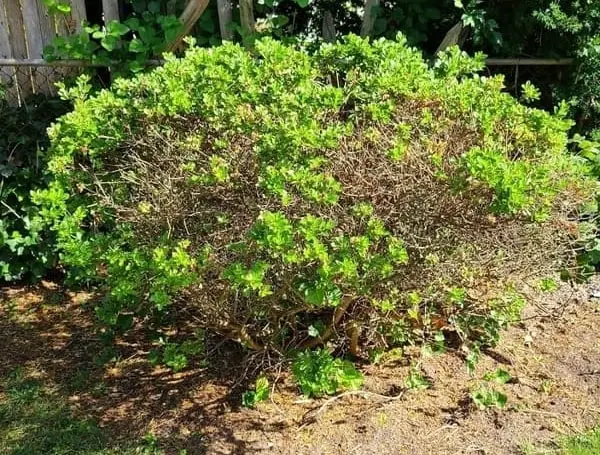
In this post, I will provide information on the lifespan of shrubs common in the U.S. and Canada. As well as some additional basic information on them to help you determine if you’re doing something wrong or if old age has caught up to your shrub.
Shrub – A woody plant that is smaller than a tree and has several main stems arising at or near the ground. When compared to trees, shrubs are relatively small.
Shrubs are either deciduous, meaning they go dormant and lose their leaves in winter, or evergreen, meaning they don’t go dormant and will retain their foliage through winter.
Semi-deciduous or semi-evergreen refers to plants that only lose their foliage for a very short period when old leaves fall off and new foliage growth is starting.
Temperennial plants are perennial in warm locations, but they are not winter hardy in cold locations. In cold climates, they are treated as annuals outside and are often kept indoors as house plants.
Did you know you can purchases plants online? Click Here to see available shrubs and plants from Proven Winners. As an Amazon Affiliate, I may receive a small commission from qualified purchases.
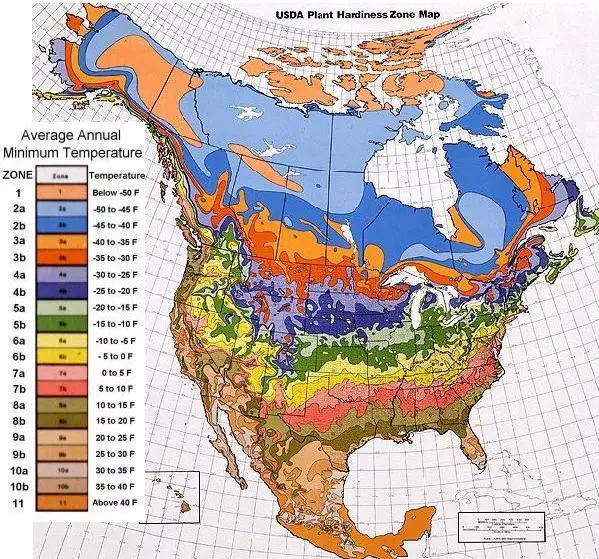
Alphabetical Shrub List
Adams Needle (Yucca Filamentosa) Lifespan: 40-50 Years
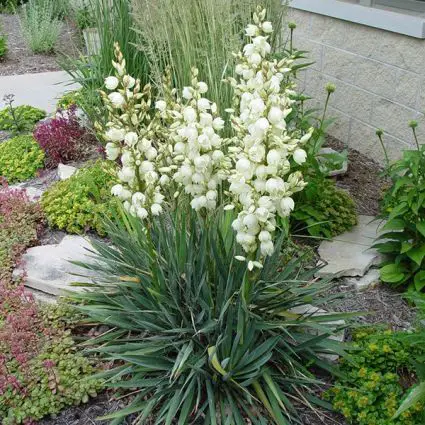
- Hardiness Zone: 4 to 10
- Growth Rate: Slow
- Flower Season: Summer
- Leaf Presistence: Evergreen
- Light Requirements: Full Sun
Image Naturehills.com
This succulent is a great plant for any garden. They are heat, cold and drought tolerant and disease and insect resistant. They have a tall, thick flowering stem that Humming birds just love.
American Arborvitae (Thuja) Lifespan: 50 to 150 Years
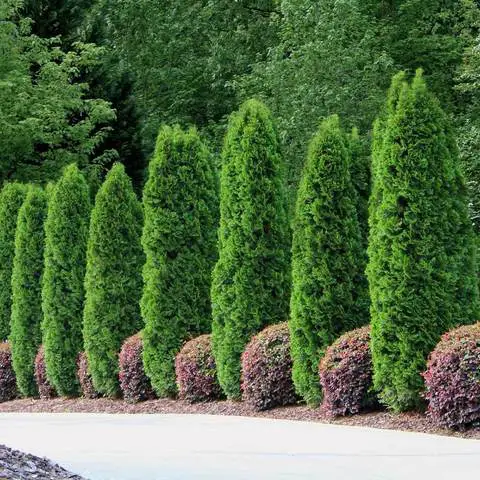
- Hardiness Zone: 2 to 7
- Growth Rate: Slow to Medium
- Flower Season: N/A
- Leaf Presistence: Evergreen
- Light Requirements: Full Sun
Image Fastgrowingtrees.com
The American Arborvitae requires almost no care when used as a hedge or screen. Still considered a shrub this evergreen can grow to heights of 40–60′ and a spread of 10–15′ at maturity.
Fun Fact: America arborvitae was useful in early canoes and medicines and became the first North American tree to be introduced to Europe. Arbor Day Foundation
Help us Earn, visit our sponsor: Get a complete grape growing system, click here for details. Thanks!
Azalea Lifespan, More then 25 Years
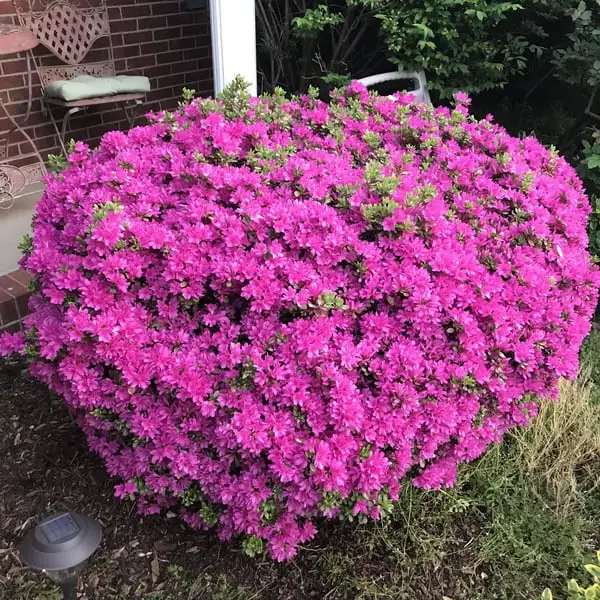
- Hardiness Zones: 8 to 11
- Growth Rate: Moderate
- Flower Season: Spring
- Leaf Persistence: Deciduous and Evergreen
- Light Requirement: Partial Shade, Full Sun*
Image Reddit.com
Azaleas are part of the Rhododendron family, and they come in a wide variety of colors. They make a great choice for beginner gardeners because they are so easy to grow. In the colder parts of the country, the evergreen variety will lose at least part of its foliage. I found reports or some Azaleas have been around for over 100 years.
* According to the Azalea Society of America, azaleas should be planted in partial shade. In fact, most people claim that azaleas do best with morning sun and afternoon shade.
Common Boxwood Lifespan: 20-30 Years
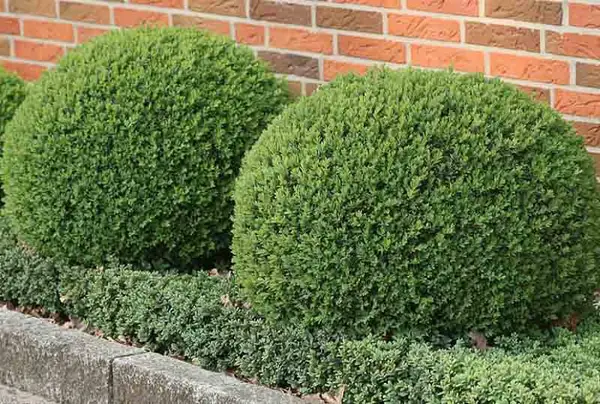
- Hardiness Zones: 5 to 8
- Growth Rate: Slow
- Flower Season: N/A
- Leaf Persistence: Evergreen
- Light Requirement: Full Sun, Partial Shade
Image Gardenia.net
The boxwood is famous for its use in formal gardens. This shrub is perfect for topiaries because they are easy to train into shapes. But don’t worry they look great with just a little trimming as well.
Fun Fact Well more like an interesting fact. Boxwood blight came over from Europe in late October 2011. It has now been found in most East Coast states, Ohio and Oregon, as well as the Canadian provinces of British Columbia, Ontario, and Quebec.
Camellia Lifespan: 100 Years

- Hardiness Zones: 7 to 9
- Growth Rate: Slow
- Flower Season: Early Spring, Winter
- Leaf Persistence: Evergreen
- Light Requirement: Partial Shade
Image Tidewatertrees.com
There are two types of Camellias commonly seen in U.S. gardens:
Japonica Camellia is the species most familiar to home gardeners. They bloom in winter or early spring and have large leaves and brightly colored flowers. The above image is a Greensboro Red Camellia.
Sasanqua Camellia differs from the Japonica by having smaller, darker leaves blossoms and they bloom in the fall. Sasanqua camellias are hardier, more drought-tolerant, and disease-resistant as well. Some varieties can even tolerate full sun.
Daphne Lifespan: 20 Years
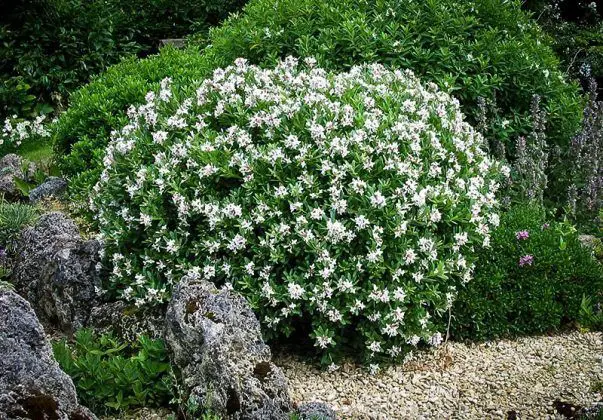
- Hardiness Zones: 4 to 9
- Growth Rate: Slow
- Flower Season: Spring
- Leaf Persistence: Deciduous and Evergreen
- Light Requirement: Partial Sun to Partial Shade
Image Chasedeerout.com
There are over 50 species of Daphne shrubs and all are toxic to both humans and animals. Chewing any part of the plant can be fatal and merely touching it can cause skin irritation.
English Yew Lifespan: 400-600 Years
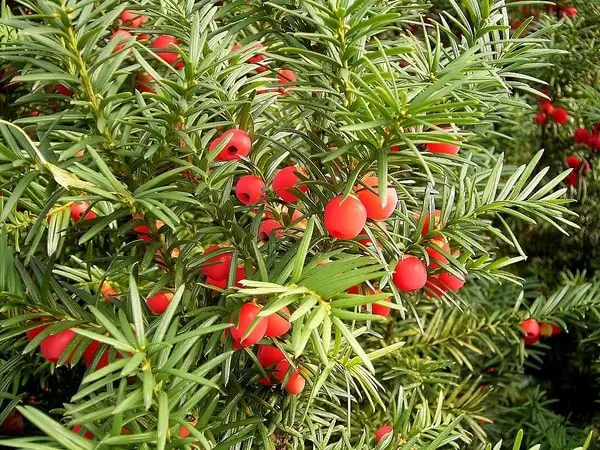
- Hardiness Zones: 5 to 10*
- Growth Rate: Slow
- Flower Season: N/A
- Leaf Persistence: Evergreen
- Light Requirement: Sun, Partial Shade, or Full Shade
Image Frank Vincentz GNU Free Documentation License, Version 1.2)
When you plant a yew you are making a life long commitment. These shrubs will outlive both you and your children. The English yew is used ornamentally in many gardens, as a clipped hedge or topiary, it can even be grown as a bonsai.
Fun Fact The Fortingall Yew is the oldest living tree in Great Britain and one of the oldest living trees in Europe.
Forsythia Lifespan: 20 to 50 Years
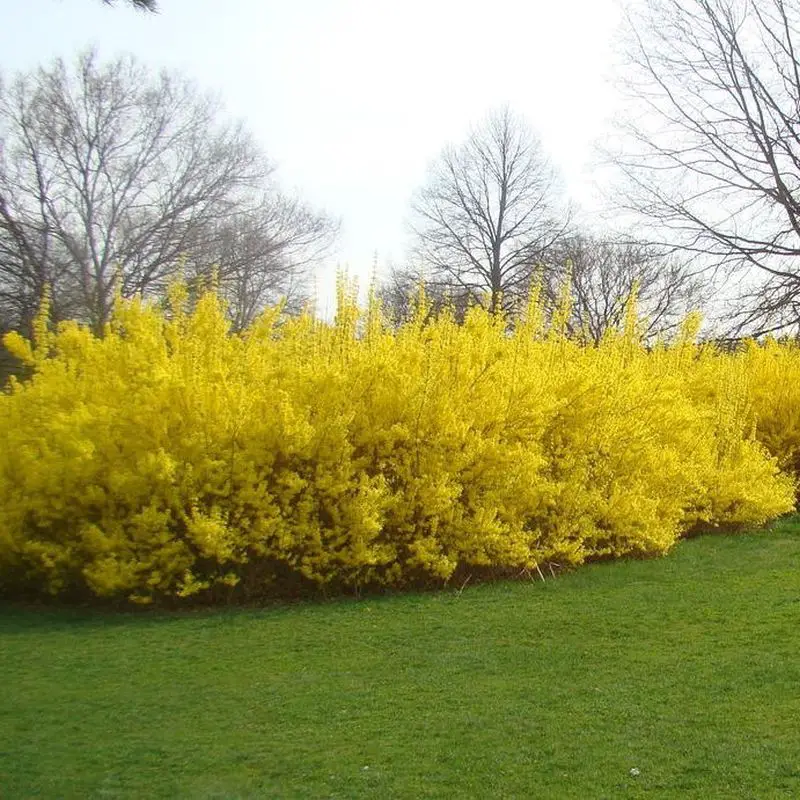
- Hardiness Zones: 5-10
- Growth Rate: Fast
- Flower Seasons: Late Winter, Early Spring
- Leaf Persistence: Deciduous
- Light Requirement: Full Sun, Partial Shade
Image Naturehills.com
Forsythia will herald the coming of spring with it’s beautiful yellow flowers. They grow in a rounded shape and should be pruned right after flowering has ended.
Glossy Abelia Lifespan: 5 to 20 Years
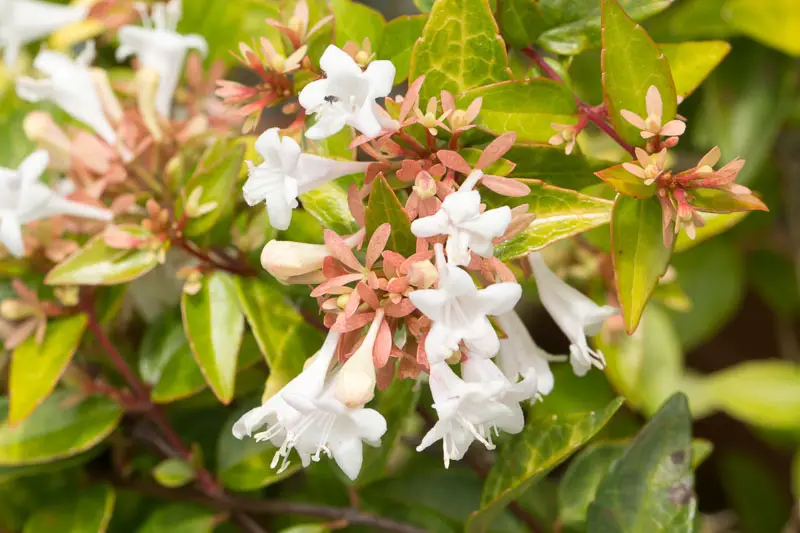
- Hardiness Zones: 5 to 9
- Growth Rate: Fast
- Flower Seasons: Spring, Summer
- Leaf Persistence: Semi Evergreen
- Light Requirement: Full Sun, Partial Sun
Image Gerdania.net
The Glossy Abelia has clusters of delicate pink and white flowers that bloom from spring through fall. The leaves have a reddish foliage all summer long but will darken and become a deeper red during winter and it may lose 50% of its leaves in colder climates.
Hibiscus (Hardy) Lifespan: 50 Years

- Hardiness Zones: 4 to 9
- Growth Rate: Fast
- Flower Seasons: Summer
- Leaf Persistence: Deciduous
- Light Requirement: Full Sun
Image Growjoy.com
There are Hardy Hibiscus and Tropical Hibiscus, both require a bit of care to flourish. The Hardy Hibiscus is easy through zone 5. They bud best in warm weather. Above zone 5 if the spring is colder they will take longer grow and bloom. Keep your Hibiscus warm by applying a layer of mulch in the winter.
Fun Fact According to Justfunfacts.com The health benefits of hibiscus tea include its ability to treat high blood pressure and high cholesterol helps in the treatment of hypertension and anxiety, helps fight bacteria, disturbed digestive and immune system, inflammatory problems and liver diseases, as well as cancer. It can also speed up the metabolism and help in healthy, gradual weight loss.
Holly Lifespan: 100 Years
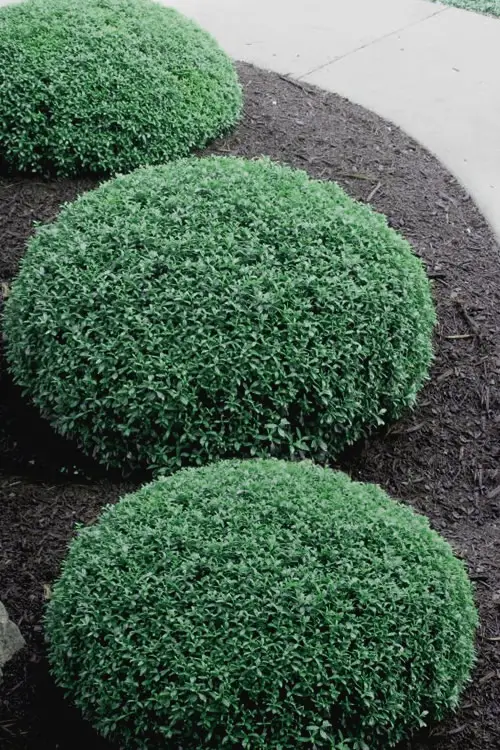
- Hardiness Zones: 3 to 10*
- Growth Rate: Slow to Fast*
- Flower Seasons: Spring
- Leaf Persistence: Evergreen and Deciduous*
- Light Requirement: Full Sun to Part Shade*
*Depending on species
Image Wilsonbrosgardens.com
There are about 400 species of Holly. We are only going to talk about four of the ones common in the U.S. and Canada. Some get berries some don’t. Some grow tall some don’t. The requirements for Holly bushes differ greatly depending on the species. Many are toxic to pets. They do all have a similar lifespan.
Inkberry has glossy dark green leaves. Greenish-white flowers appear in May and June, giving way to small black fruits by early fall.
Winterberry A North American native, this slow growing Holly does well in damp areas. The leaves of this holly will fall of in Autumn leaving brightly colored berries on the stems that may last through the winter.
Blue This fast-growing Holly has dark green leaves with a bluish tone. It get pretty white flowers in late spring and berries in the early fall.
Japanese Holly can be an invasive bush even with its slow growth. Like most Hollies, it gets white flowers but its black berries hide in its shiny green leaves and are not as visible as other holly varieties. The above image is a dwarf Japanese Holly.
Honeysuckle Lifespan: 20 Years
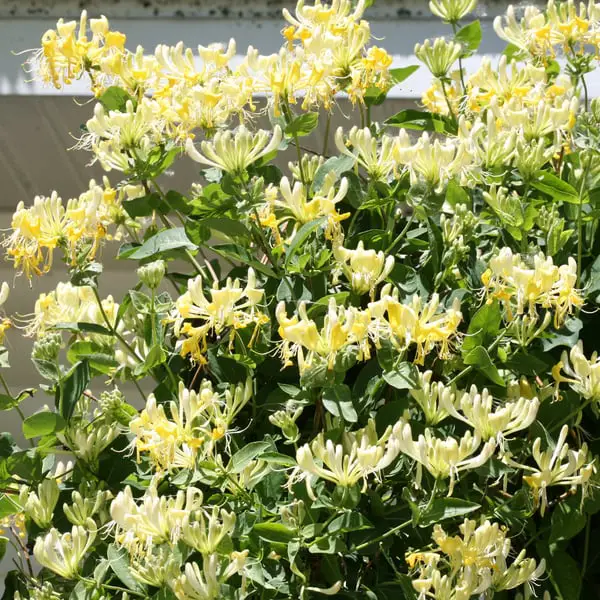
- Hardiness Zones: 4 to 9
- Growth Rate: Fast
- Flower Seasons: Mid Spring
- Leaf Persistence: Evergreen and Deciduous*
- Light Requirement: Full Sun
Image Jacksonandperkins.com
There are approximately 180 varieties of Honeysuckle, both shrubs, and climbers, many of which can be invasive. The Sensation Honeysuckle is a fast-growing vine variety popular in Europe as well as the U.S. and Canada. They are very fragrant and loved by both butterflies and hummingbirds. The nectar is safe to be enjoyed by humans as well.
Hydrangea Lifespan: 50 years
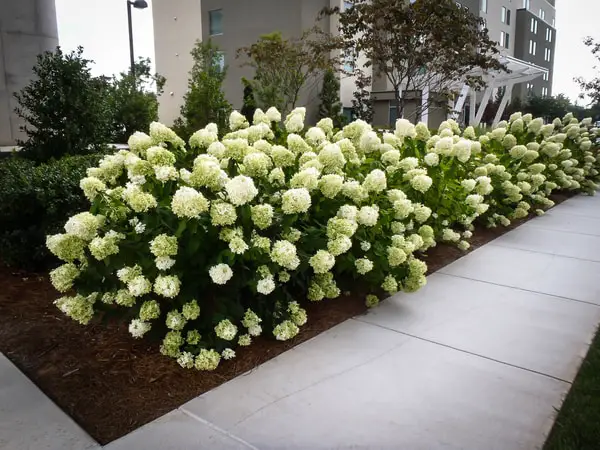
- Hardiness Zones: 3 to 11*
- Growth Rate: Fast
- Flower Seasons: Spring and Summer
- Leaf Persistence: Deciduous
- Light Requirement: Full Sun to Part Shade
*Depending on species
Image Source Unknown
Depending on who you ask there are up to 80 varieties of Hydrangea, 6 of which are popular in the U.S. and Canada. My two favorite are Big Leaf and Pinnacle. Pinacle has white cone shape flowers. Big Leaf flowers come in white, pink, blue, purple, or red. There are two flower types. Mophead is round globes and Lacecap is flat to slightly domed flower heads that have many smaller florets in the center and showier florets around the edges, creating a lacy appearance.
Juniper Lifespan: 350 to 700 Years
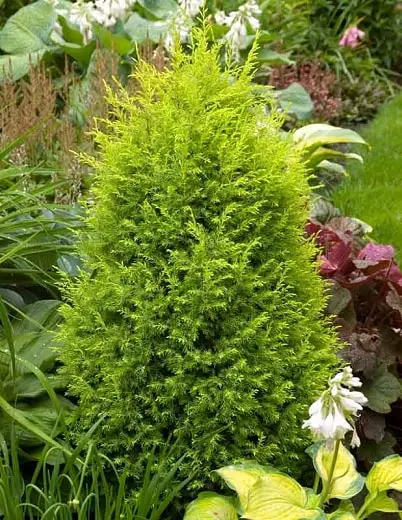
- Hardiness Zones: 2 to 9
- Growth Rate: Fast
- Flower Seasons: Spring and Fall*
- Leaf Persistence: Evergreen
- Light Requirement: Full Sun
*Only males and depending on the species
Image Gardenia.net
Junipers range from western Alaska throughout Canada and the U.S. The National Wildlife Federation counts juniper shrubs as one of the top 10 plants for wildlife because they provide an abundance of food, shelter from harsh weather, and nesting sites for birds.
Fun Fact: Burning juniper wood gives smoke you can barely see but which is very aromatic. In ancient times it was used for the ritual purification of temples and during outbreaks of the plague to fumigate homes.
Lilac (Common) Lifespan: 100 Years
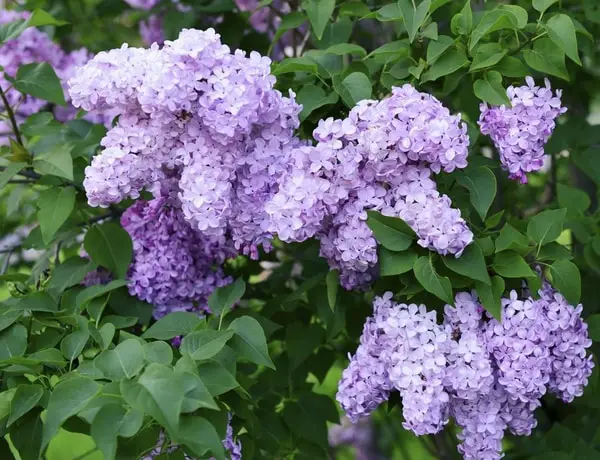
- Hardiness Zones: 2 to 7
- Growth Rate: Fast
- Flower Seasons: Spring and Summer
- Leaf Persistence: Evergreen
- Light Requirement: Full Sun, Part Sun
Image Neighborscape.ca
With their purple flowers and strong fragrance, the Common or French lilacs are the ones people in the U.S. and Canada are most familiar with. However, there are over 1,000 varieties.
Mountain Laurel Lifespan: 75 Years

- Hardiness Zones: 5 to 9
- Growth Rate: Slow
- Flower Seasons: Late Spring and Summer
- Leaf Persistence: Evergreen
- Light Requirement: Full Sun, Partial Shade
Image Gardenmanage.com
The Mountain Laurel is by no means the only popular Laurel bush. There are many other Laurels but this is my favorite. There are also varieties of the Mountain Laurel, such as Heart of Fire, Elf, and Snowdrift. A close relative of rhododendrons and azaleas, this shade-tolerant North American shrub has gorgeous dense flowers that can completely obscure the branches.
Rose Lifespan: 35 Years

- Hardiness Zones: 4 to 9
- Growth Rate: Fast
- Flower Seasons: Spring, Summer, Fall
- Leaf Persistence: Deciduous
- Light Requirement: Full Sun
Image Rosecantine.com
There are over 300 species of Roses. We are referring to your garden variety of rose when we talk lifespan. The Modern Rose. They come in just about every color imaginable, except blue. Notoriously hard to grow they are never the less attempted by almost every gardener because they make a stunningly colorful, fragrant, addition to the garden.
Fun Fact The oldest living Rosebush is said to be The Rose of Hildesheim, a Rosa canina, established by King Louis the Pious back in 815.
Viburnum Lifespan: 50 to 150 Years
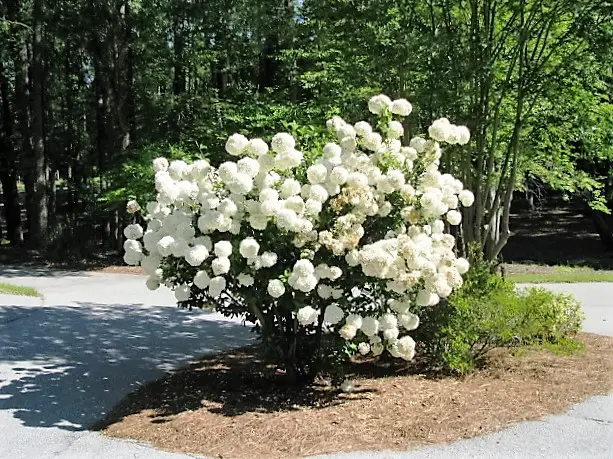
- Hardiness Zones: 2 to 11*
- Growth Rate: Slow
- Flower Seasons: Spring, Summer
- Leaf Persistence: Evergreen, Semi-evergreen, Deciduous*
- Light Requirement: Full Sun to Partial Shade
- Depending on variety.
Image Thetutuguru.com
Lifespan varies greatly with Viburnum because there are over 150 species. Though often confused with the Hydrangea, which has smaller flowers and blooms at different times, Viburnum is considered one of the most loved and planted garden shrubs. Everything about this plant is beautiful. It’s flowers range from white and cream to pink-flushed or wholly pink. Many species bear ornamental red, yellow, blue, or black fruits in late summer or fall.
Weigela Lifespan: 25 to 50 Years
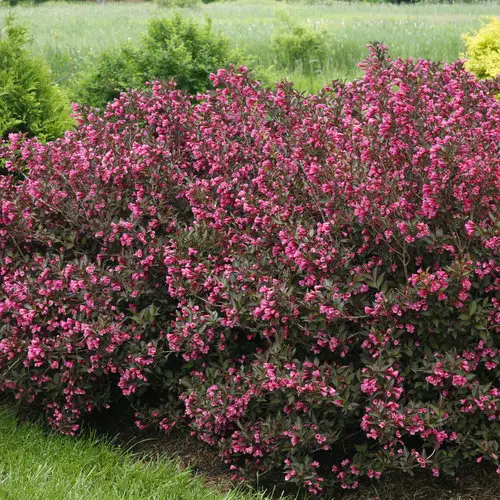
- Hardiness Zones: 4 to 8
- Growth Rate: Moderate
- Flower Seasons: Spring
- Leaf Persistence: Deciduous
- Light Requirement: Full Sun
Image Provenwinners.com
The Weigela comes in a wide range of foliage colors—from a creamy variegated leaf to a nearly black leaf. The above image is of the Weigela florida Wine & Roses. The flowers come in shades of red, pink, white, and yellow. This is a pretty healthy, low maintenance shrub great for borders or to just add a pop of color in your landscape.
Fun Fact The Weigela florida is not, as its name implies, native to Florida. The name derives from the Latin “floridus”, meaning “blooming” or “flowery”.
Winter Heath (Erica carnea): 20 Years
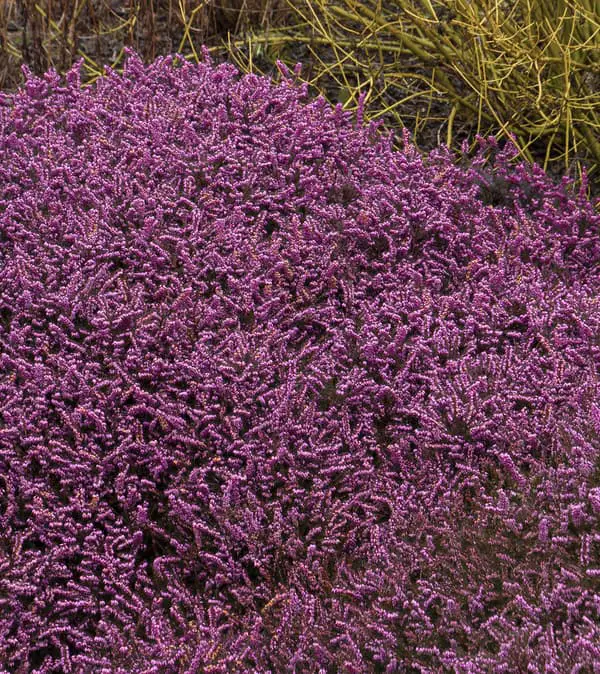
- Hardiness Zones: 4 to 8
- Growth Rate: Moderate
- Flower Seasons: Early Winter to Late Spring
- Leaf Persistence: Evergreen
- Light Requirement: Full Sun
Image Monrovia.com
Heath or Heather? While both belong to the same family, Heath is of the Erica genus and Heather is of the Calluna genus. The main difference is winter hardiness and leaf appearance. Heath has needle-like leaves and Heather has flat leaves. Image is of Kramer’s Red Winter Heath.
I hope you found this post helpful. I learned a lot writing it.
